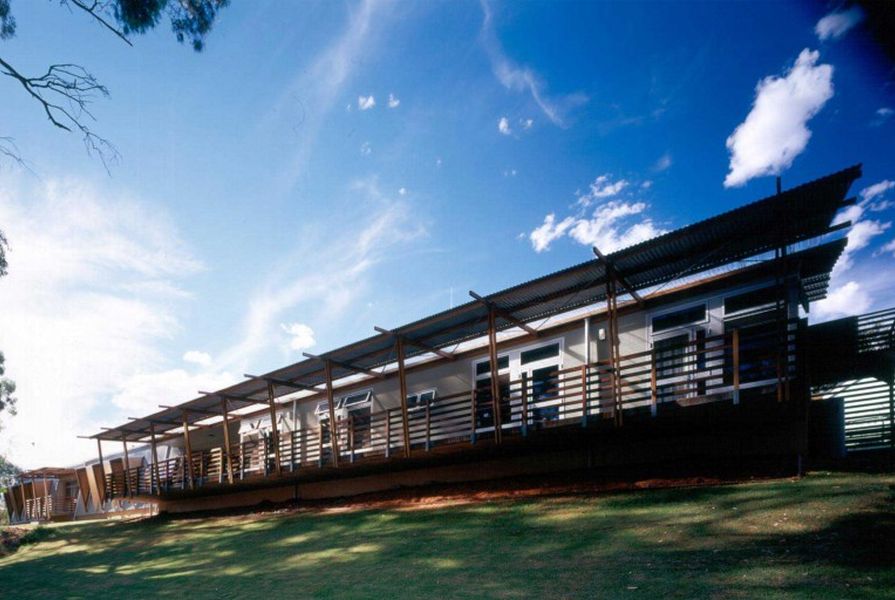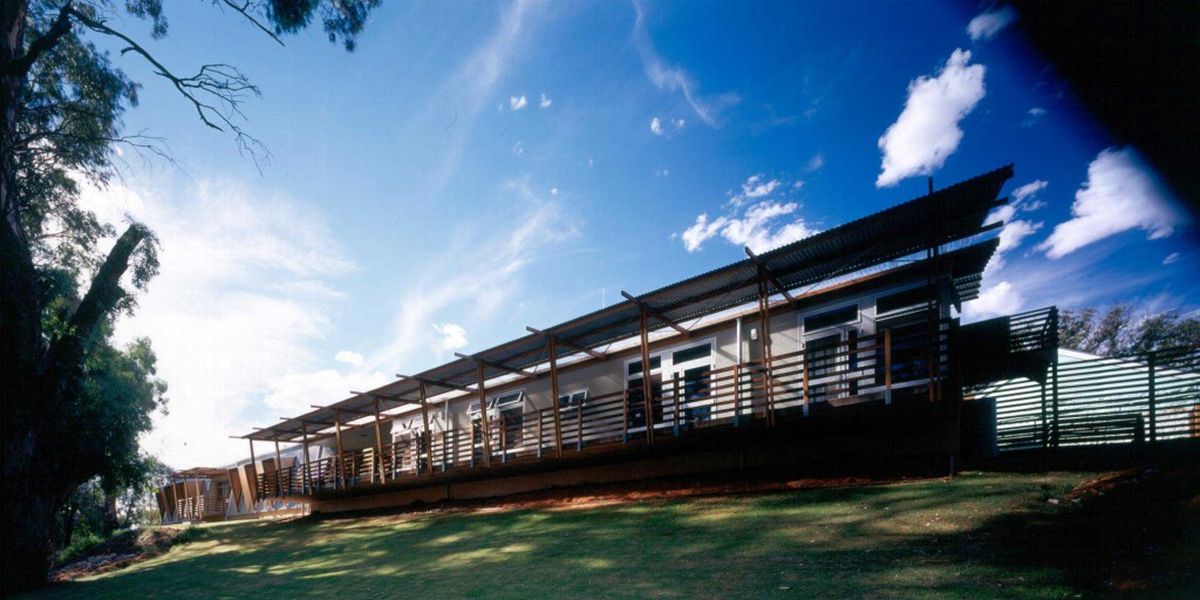The inclusion of Indigenous voices in architectural practice is gaining momentum in Australia and around the world. But for many non-Indigenous practitioners, addressing Indigenous heritage can “send people into conniptions,” as Dillon Kombumerri highlighted at AA Roundtable: Rights and Reclamations, a discussion moderated by Carroll Go-Sam, which also included Sarah Lynn Rees. In this edited except, Kombumerri clearly articulates that connecting to Country, rather than being overwhelmed by thousands of years of culture and history, is the first step to an architectural future more enriched by Indigeneity.
Carroll Go-Sam: The Merrima Aboriginal Design Unit in the early 1990s was something that was born out of the New South Wales government’s Department of Public Works in Sydney. Dillon, can you tell me about how Merrima was generated out of a government agency?
Dillon Kombumerri: When the Merrima Aboriginal Design Unit started, the idea was to reclaim the space that was being occupied by non-Aboriginal people. We started Merrima to give agency to Aboriginal voices. Kevin O’Brien and Alison Page, who were emerging designers at the time, joined me.
First and foremost, we wanted to work out what it means to define oneself and lead the agenda. Merrima was a short-lived project that lasted only four or five years, but it was powerful. Our message was that we wanted Aboriginal people to be involved, from the conception of an idea through to the project leadership, the community collaboration, the design, construction and delivery of the project, continuing on into the occupation and custodianship of that project. That’s the gold standard. Thirty or forty years ago, there was so few of us to generate momentum but today there is a critical mass building with people who have the ability to make positive change.
CG-S: In terms of Merrima and its approach to design, you talked about the “gold star standard” in terms of a set of methods that doesn’t talk about design. Instead, it talks about the community outcomes. Was this the approach only for this particular project?
DK: I think both yes and no. Architecture is about design thinking and design delivery. A good architect does both well. The projects that interested me were ones where I worked with Aboriginal communities, and the object that was delivered wasn’t the important thing. The important thing was the process. You need to ask yourself, why are you doing this project? Who is going to benefit from it? How will these people care for the thing that you have created? As an architect, you are part of a whole process that comes before and after you. That’s what really interests me.
As an example, the Wilcannia Health Service, that Alison and I did for a community with a predominantly Aboriginal population, was activated by the people of that place. They identified the health crisis in their community, and they really worked hard to do something about it. It was the process that was important.
Now, I work in the Department of Planning for NSW and the key piece of legislation that affects all the work we do is the Environmental Planning and Assessment Act. Part of this Act is the requirement to protect and maintain heritage, including Aboriginal culture and heritage. This has sent people into conniptions and they don’t know how to do it. It’s no longer just a good thing to do, it’s legislated. You all have to address Aboriginal heritage as part of good design.
So, what we are trying to say is, rather than trying to understand Aboriginal culture and heritage, it’s about trying to connect to Country. Where you belong is what generates the culture of peoples around the world. Rather than trying to understand thousands of years of development of culture, what do you understand of Country and what is it telling us?
Dillon Kombumerri, Sarah Lynn Rees and Carroll Go-Sam at the AA Roundtable discussion.
Image: Katelin Butler
Our first place names come from Country. For example, Minjerribah, where I’m from, is the “mosquito place.” “Bah” is place and “minjerri” is mosquito. We didn’t name Country, that’s the Western way of colonizing land. Sydney, Brisbane and Melbourne – these places are all named after people. We never did this, we never named Country. Country told us who it was.
In Sydney, the naming of Barangaroo and Bennelong Point doesn’t make sense. Non-Aboriginal people thought that they were respecting culture by using these names, but they have named Country after a person and that’s not our protocol. When we do an acknowledgement of Country, we acknowledge Elders past, present and emerging. There is a continuum of really important people that we acknowledge, not just one person. In fact, Country also names people. My people, Kombumerri are the are the swamp worm people. In Sydney, the Gadigal people are the grass tree people. Learning the first place names will tell you the character of that Country. These are the cues for the design and planning industry to start to connect with Country.
Avram Noam Chomsky, an American linguist, suggested that in the structure of the brain, thought and language are linked. As we speak our thought our language is created and so is our culture. George Orwell, English novelist and essayist, also told us in Nineteen-Eighty-Four that if you control the language, you control the people. When we were told not to speak our language, they broke our culture. Our language came from Country. You break that, you break our culture.
If you speak another language, you think differently – and that’s what we’re trying to get through to our design and planning industry.
The push back on our delivery of this concept was that it seems very simplistic. But when you think in another language and understand the meaning of those places, you are connecting with Country. This replaces the challenge or complexity of trying to understand people, to understanding Country.
As architects, we’re trained to do a site analysis. “Site” is related to “sitting” and is related to “seeing” – and this is an arm’s length engagement with Country. “Analysis” is the unpicking of a complex thing into smaller parts. Country doesn’t work like that – Country is a very complex, fluid and not completely knowable thing – and that’s the way it should be. Walking Country is site analysis tenfold. You engage all your other senses.
Most neuroscientists agree that movement and cognition are powerfully connected. Amazingly, the part of the brain that processes movement is the same part of the brain that processes learning. The vestibular (inner ear) and cerebellar (base of brain responsible for motor activity) work together information-gathering and feedback source for movements. That’s why there’s value in playground activities that stimulate inner-ear motion, like swinging, rolling, and jumping.
CG-S: I would add that for Indigenous people, if you have a concept of Country, one particular place might have significance but it’s connected to other things. It is a connective tissue.
DK: The traditional form of greeting is not saying “hello” – that’s a human-centred approach. Traditional communication protocols are about sharing where you’re from and who your mob is. The human-centred approach needs to shift to be Country centred. My advice to architects is to ground yourself within Country and community.
This is an edited exerpt from AA Roundtable: Rights and Reclamations, a discussion with Dillon Kombumerri and Sarah Lynn Rees, moderated by Carroll Go-Sam. The discussion was a part of the Asia Pacific Architecture Festival. Read more on Rights and Reclamation in the dossier published in the March/April issue of Architecture Australia.


















